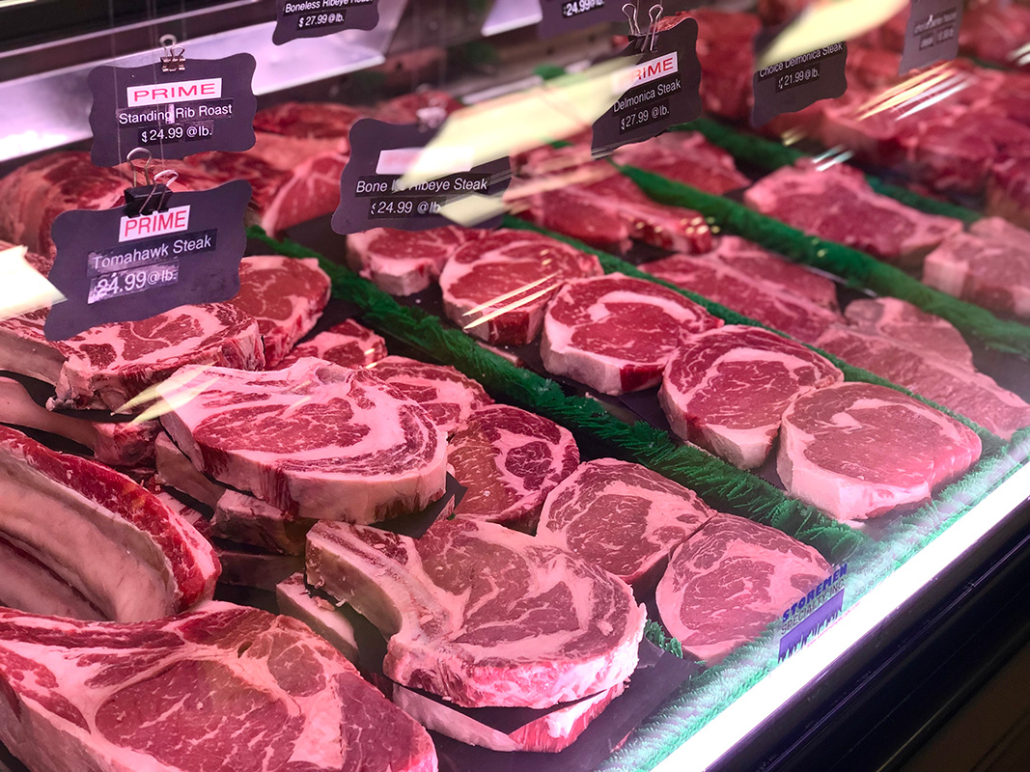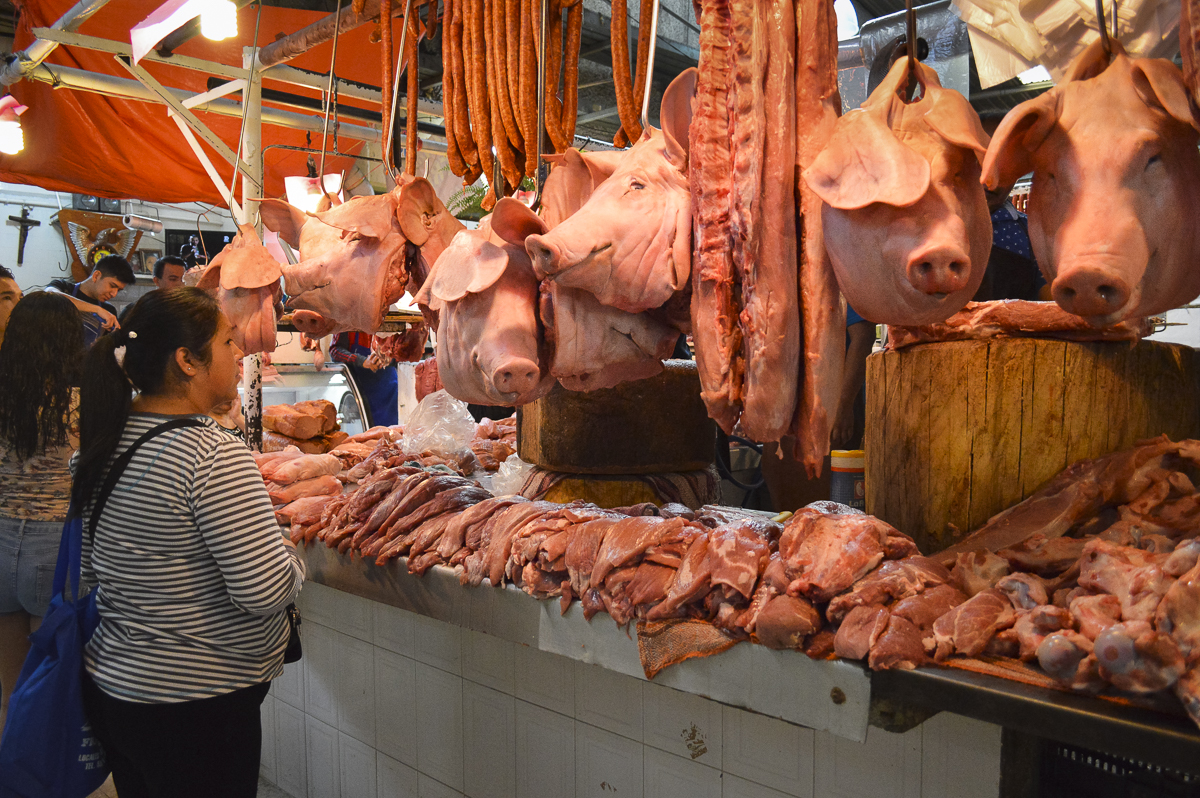Discover Fresh Cuts at Bagley Farms Meat Market Edwardsville IL for Your Following barbeque
Discover Fresh Cuts at Bagley Farms Meat Market Edwardsville IL for Your Following barbeque
Blog Article
Discover the Art of the Butcher's Cut in a Modern Meat Market
In the ever-evolving landscape of contemporary meat markets, the butcher's cut has actually transcended its typical roots, merging olden workmanship with modern practices. Today's butchers are not merely processors of meat; they are knowledgeable craftsmens who emphasize sustainability and honest sourcing. Their knowledge in picking and preparing cuts customized to specific culinary requirements uses an exceptional dining experience. What really sets the modern-day butcher apart is their capacity to forge a much deeper link in between customers and the origins of their meat. How do these masters equilibrium practice with advancement, and what ramifications does this have for the future of meat intake?
Advancement of Butchery Methods
The evolution of butchery techniques shows a rich tapestry of development and adaptation driven by improvements in modern technology, adjustments in customer demand, and a deeper understanding of meat science. Historically, butchery was a craft gave via generations, with methods refined over centuries to maximize yield and flavor. The commercial change ushered in mechanization, changing standard practices and allowing massive processing.
The mid-20th century saw butchery methods better refined by clinical insights into muscle biology and meat aging, improving both tenderness and taste. Developments like vacuum cleaner packaging and refrigeration extended product shelf-life, permitting butchers to expand offerings and boost quality assurance. This duration also noted the surge of customized tools, such as band saws and meat slicers, which increased precision and efficiency in meat handling.

The 21st century has presented electronic modern technology into the butchery world. Electronic systems now assist in tracking animal provenance and optimizing cuts to satisfy details client choices. In addition, a rebirth in artisanal butchery has actually arised, mixing traditional skills with modern-day expertise to deal with consumers looking for honest and lasting meat alternatives. This advancement highlights a dynamic interaction in between custom and advancement, meeting contemporary needs while protecting the craft's heritage.
Understanding Meat Cuts
Recognizing the details of meat cuts is important for both butchers and consumers seeking quality and worth. Each cut originates from a different component of the pet, imparting distinct tastes, structures, and food preparation methods - bagley farms meat market edwardsville il. Proficiency of these distinctions not just improves culinary experiences but likewise optimizes the utility of each carcass. For butchers, specific cuts reflect ability and regard for the craft, making sure very little waste and optimal return.

Recognizing muscular tissue structure is critical; muscle mass used extra regularly by the animal have a tendency to be tougher and are best fit for slow-moving food preparation techniques, while less-used muscle mass, like those located in the loin, are extra tender and ideal for grilling or roasting. Experience with these differences encourages customers to make educated choices, boosting their culinary endeavors.
Choosing Top Quality Meat
Picking the right meat involves more than simply choosing a visually appealing piece from the screen. The art of picking top quality meat requires a discerning eye and expertise of particular attributes that signify quality and quality.
Second of all, think about the marbling, which refers to the white flecks of fat within the muscle. Appropriate marbling is a vital sign of tenderness and taste, as it thaws throughout cooking, improving the meat's juiciness. Remember, higher marbling typically associates with visit this site exceptional high quality cuts, such as USDA Prime.
Texture is one more critical aspect; meat must really feel solid to the touch, not slimy or excessively soft. In addition, be mindful of the aroma. Fresh meat should have a clean, neutral scent, without any sour or repulsive odors.
Matching Cuts With Food Preparation Methods

Alternatively, tougher cuts like brisket and chuck roast are abundant in collagen, which damages down right into gelatin when prepared slowly. These cuts are excellent for braising or slow roasting, enabling the meat to soften over time and establish deep, intricate flavors. Likewise, cuts such as brief ribs and pork shoulder prosper with slow-cooking techniques, where expanded cooking times transform their durable textures into delicious dishes.
Lamb shanks and oxtail, which require long term cooking to tenderize, are perfect candidates for cooking or slow-moving simmering. These approaches coax out abundant, passionate flavors while maintaining wetness. By recognizing the distinct features of each cut, cooks and home cooks alike can elevate their culinary developments, ensuring each dish is both satisfying and unforgettable.
The Butcher's Function Today
Browsing the progressing landscape of the modern-day meat market, the butcher's function today prolongs beyond plain prep work of cuts. Contemporary butchers are cooking artisans, instructors, and supporters for sustainable techniques. They link the space between the farm and the fork by making certain moral hop over to these guys sourcing, understanding animal husbandry, and focusing on transparency in the supply chain. This change shows the growing customer demand for top quality over amount, where provenance and animal well-being are critical.
In addition to crafting specific cuts, butchers currently involve straight with customers, offering cooking recommendations and tailoring options to suit specific needs and preferences. Their competence in meat aging, marbling, and flavor accounts equips consumers to make enlightened decisions, boosting their culinary experiences. This individualized service exhibits the butcher's evolving role as a trusted expert in the kitchen area.
Moreover, butchers are critical in decreasing waste, using whole animals to develop varied items such as sausages and stocks. This comprehensive technique not only appreciates the pet yet also aligns with contemporary sustainability goals. This way, the modern-day butcher personifies both practice and development, adapting to an ever-changing market while protecting the creativity and honesty of their craft.
Verdict
Mastery in recognizing varied meat cuts and high quality signs equips butchers to provide informed suggestions, lining up certain cuts with optimal food preparation methods. By honoring historical practices while accepting contemporary demands, the find here butcher's duty continues to be essential in today's innovative meat market.
Report this page